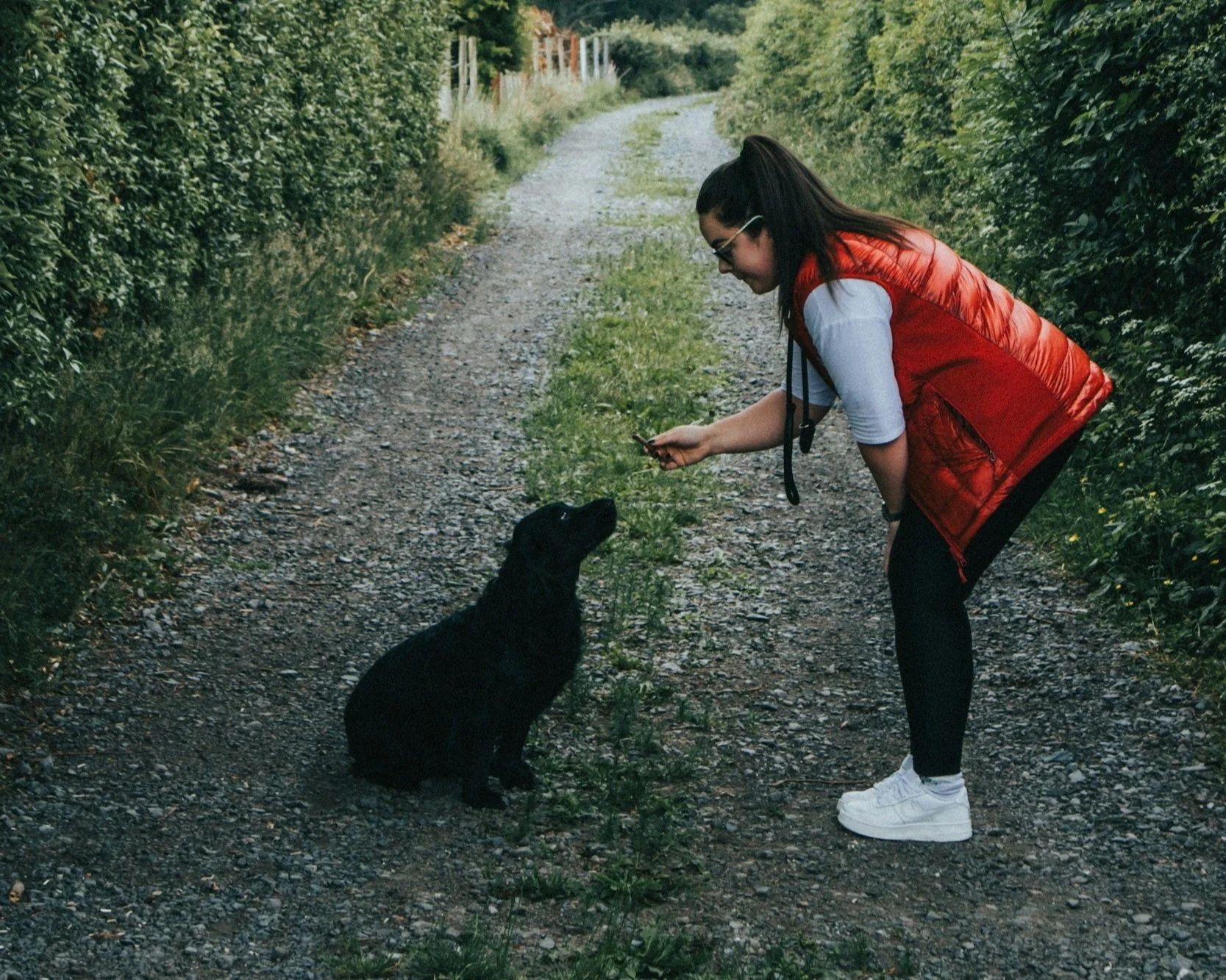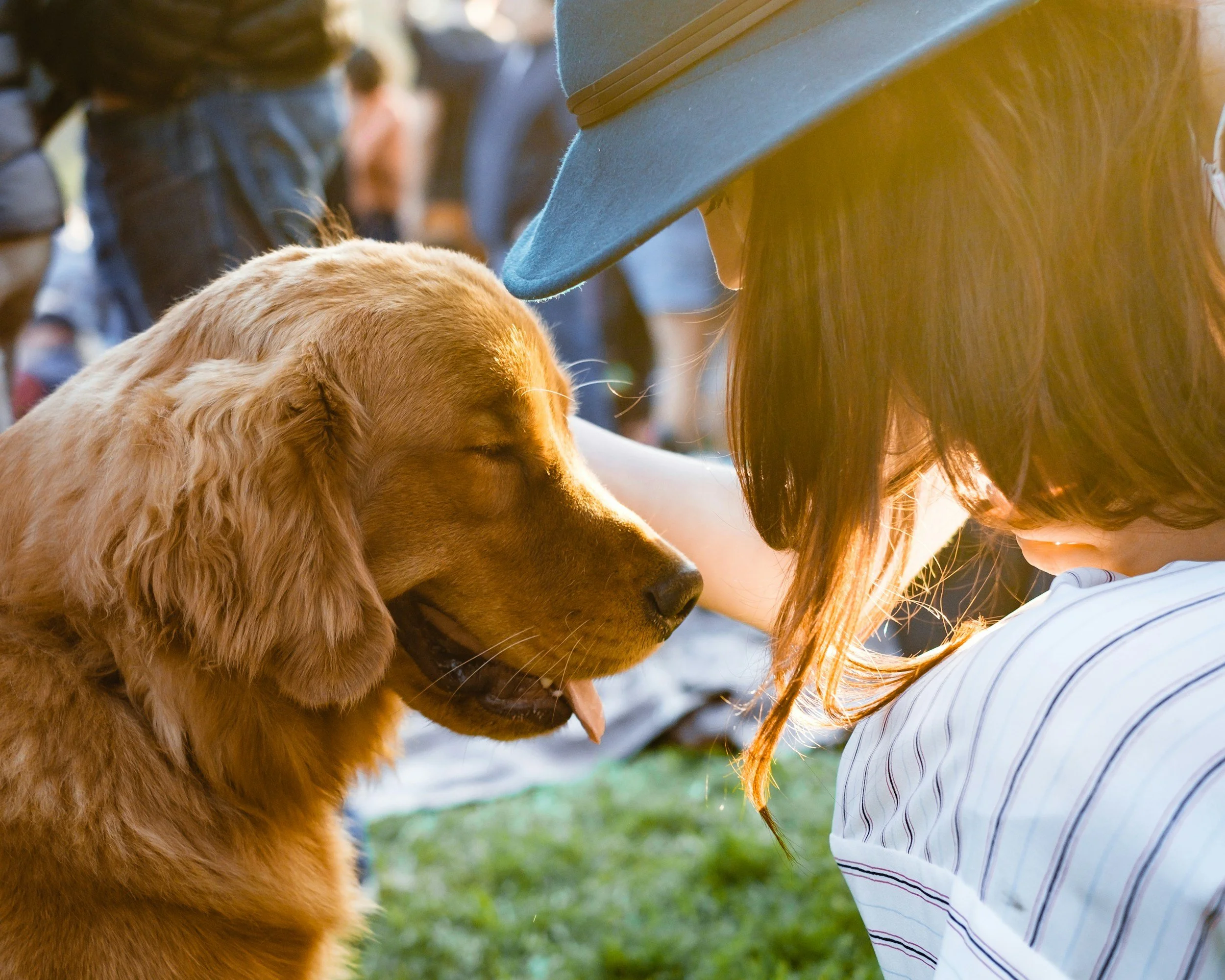ABCs of Positive Training
Children learn their letters and numbers via association. A is for Apple. B is for Boy. C is for Cat, and so on. Dogs also learn through association. An action associated with a word, or visual cue, followed by a reward will teach the dog to associate the cues with performing the action as it will be rewarding to do so.
A is for Association.
Every new behavior you teach must be done via association. Your dog is very visual and will associate your body language with the result of their actions, as they are rewarded for it. Let’s take an example of teaching your dog to come.
1. Your body language must be inviting. Lean forward as you move backward.
2. Your voice must be friendly and enthusiastic. Praise with excitement as your dog comes toward you.
3. The moment your dog arrives they are praised and rewarded for the action.
Through these procedures your dog has associated your bending and moving backward with the come cue. They know that moving toward you will be rewarding as they enjoy the sound of your voice and getting rewards when they arrive.
Another usage of association in training is when teaching your dog to heel. They learn through cause and effect. If you move to the right and they don’t, they aren’t rewarded. But if they move to the right with you, they are praised and rewarded. As dogs strive to repeat rewarded behavior, your dog will associate moving with you as the way to go. You can further enhance their performance by only praising and rewarding when they are on the correct side of you while walking. They associate that side and position as something that will result in rewards.
B is for Bridging.
In training, a bridge is connecting a cue to an action, and then to a reward for the action. In essence, bridging the communication gap between dog and human handler. There are several ways to do this.
· You can use your voice
· You can use a clicker
· You can use a visual cue
If you choose to use your voice as the bridge, be sure to use only 1 word and be enthusiastic. Dogs can read our behavior as we read a book. They know our emotions. Dogs know if you’re happy, sad, scared or angry. An enthusiastic “Yes” or “Good,” would work well. Better still, a clicking sound, emulating the sound an actual clicker makes. Regardless of what you use, it must be unique to this situation.
Many pet trainers use actual clickers to bridge behaviors. While this does fulfill the need for a unique sound, it is also something else you must hold in your hands, along with a leash and treats. If your dog is to walk on your left side, hold the clicker over the leash in your right hand. If your dog will be walking on your right side, hold the clicker over the leash in your left hand, leaving your right hand free for targeting and visual cues.
Visual cues can also be used to bridge behaviors. This would be a first choice for deaf dogs. They cannot hear the verbal bridge or click sound and need something to let them know they performed well, and a treat is on the way. You’ll want to use something quick and effective, such as a light touch on the dog’s head. This action gains their attention, and they’re ready for their food reward.
Note: Secondary reinforcement is helpful in encouraging your dog to continue in the right direction. This secondary reinforcement can be praise or wiggling a toy in front of their face. Using these reinforcers make the dog want to continue performing as you guide them. For example, your dog is remaining at your side and heeling at your pace. Praise encourages them to continue and will also make them happy about doing so. This is where you can increase the joy in the training process. A happy dog prances, grins and wags their tail. Secondary reinforcement is the cause of this joy.
C is for Consistency.
Consistency creates reliability. Dogs learn faster if you communicate clearly and consistently regardless of the environment and distractions. Here’s a few ways you can be consistent during dog training:
· Use the same cue (visual and/or verbal) for the same behavior outcome. For example, if you always step forward on your left leg when requesting a heel, your dog will respond faster than if you kept changing the legs that move first.
· Do not change your cues when in a new environment or when there are distractions around you. If you ignore distractions, your dog will learn too as well. Your dog has been taught to respond to specific cues and will strive to perform them as they know a reward will be coming their way.
· Use one cue, only, for each behavior requested. Your dog heard you the first time. Their hearing and vision are quite acute. No need to repeat yourself, as this causes your dog to not respond quickly, if at all. Keep in mind you are teaching your dog your language through targeting and bridging their responses. If you repeat a word, they may believe that the word you repeated is their cue. For example, “heel, heel, heel,” instead of just, “heel.” Your dog may wait until all 3 “heels” were used prior to their response, whereas, using just the one word will promote a faster response and your dog achieves their bridge and rewards. Furthermore, repeated words tend to take a harsher tone. You should never use a harsh tone of voice when using verbal cues or you dog may tune out.
There are many other rules to be a successful dog trainer, but these basic ABCs will help give you a guideline to better communication between you and your dog. When you can communicate, your dog will be happy and strive to do their best.
Recommended Products:
We don't add bulk salt, soy, corn or gluten. These freeze-dried beef liver bites seal in all the flavor and nutrients. They contain essential amino acids that dogs need and are easy on teeth!
This flaky, tasty, wild caught Silver Carp is not only a healthy, top feeding fish, but also nutritionally dense, packed with Omega 3’s, and easy to digest for your pup. Sourced & Manufactured in the USA, No Chemicals, Fillers, Artificial anything, Hormones, Antibiotics, Byproducts, Dyes, Flavors or Preservatives.




